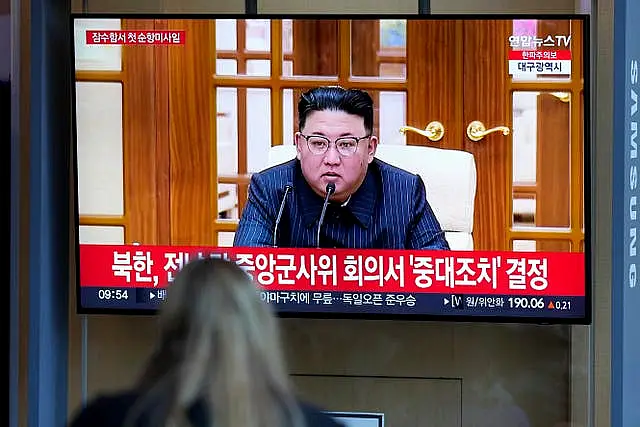North Korea test-fired two short-range ballistic missiles a day after the United States and South Korea began military drills that Pyongyang views as an invasion rehearsal.
The missiles launched from the southwestern coastal town of Jangyon flew across North Korea before landing in the sea off that country’s east coast, South Korea’s Joint Chiefs of Staff said in a statement.
It said both missiles travelled about 620 kilometres (385 miles).
The reported flight distances suggest the missiles target South Korea, which hosts about 28,000 US troops. South Korea’s military called the launches “a grave provocation” that undermines stability on the Korean Peninsula.

The US Indo-Pacific Command said Tuesday’s launches do not pose an immediate threat to its allies. But it said the North’s recent tests highlight the “destabilising impact” of the North’s unlawful weapons programmes and that the US security commitment to South Korea and Japan remains “ironclad”.
Japanese Prime Minister Fumio Kishida told reporters that officials were still gathering details of the North Korean launches and there were no immediate reports of damage in Japanese waters.
Pyongyang could further escalate its weapons tests over the coming days in a tit-for-tat response to the allies’ military drills, which are planned to run until March 23.
Last week, North Korean leader Kim Jong Un ordered his troops to be ready to repel what he called the “frantic war preparations moves” by his country’s rivals.
Worries about North Korea’s nuclear programme have grown sharply after the North test-fired more than 70 missiles in 2022, many of them nuclear-capable weapons, and openly threatened to use them in potential conflicts with the United States and South Korea.
North Korea appears to be using long-stalled talks with Washington and the expanding US-South Korean drills as a chance to enlarge its weapons arsenals to increase its leverage in future dealings with the United States.
The North Korean threats, along with China’s increasing assertiveness, have pushed the US to seek to reinforce its alliances with South Korea and Japan. But some experts say a solidified Washington-Seoul-Tokyo cooperation could prompt Pyongyang, Beijing and Moscow to strengthen their own trilateral ties.

China and Russia, embroiled in separate confrontations with the US, have repeatedly blocked US and its allies’ bids to toughen United Nations sanctions on North Korea.
Tuesday’s launches were the North’s second weapons test this week. On Monday, North Korea said it had test-fired two cruise missiles from a submarine the previous day.
It implied the cruise missiles were being developed to carry nuclear warheads, though outside experts debate whether Pyongyang possesses functioning nuclear-armed missiles.
US National Security Adviser Jake Sullivan said on Monday that North Korea has been refining its submarine-launch capabilities since its first test in 2016, and the United States was studying Sunday’s launches to assess the North’s capabilities.
“But of course, we’re not going to let any steps North Korea takes deter us or constrain us from the actions that we feel are necessary to safeguard stability on the Korean Peninsula,” he said.
The US-South Korean joint exercises that started on Monday include computer simulations involving North Korean aggression and other security scenarios and field exercises. The field exercises would return to the scale of the allies’ biggest springtime exercises that were last held in 2018, according to South Korean defence officials.
The two countries have been expanding their drills as North Korean nuclear threats have been growing.







